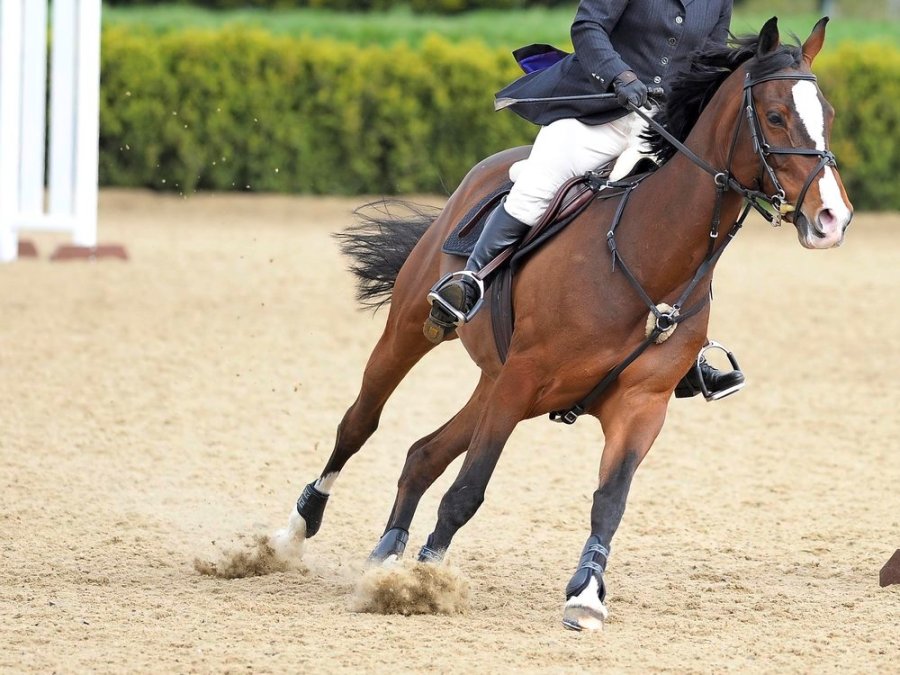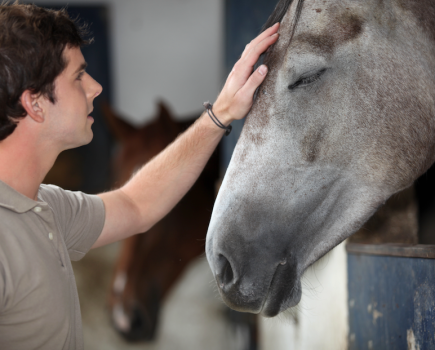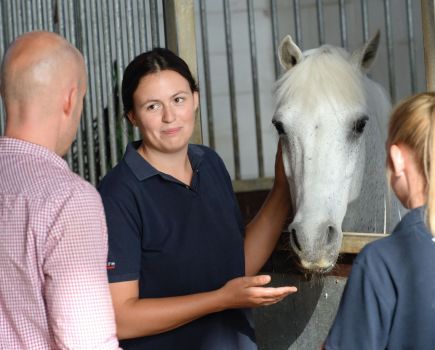The primary role of ligaments is to keep bones in alignment and provide support to joints. To maximise their athletic potential, horses have evolved with no muscle below the carpus (knee) and hock. This reduces weight carried and allows the horse to travel at speed.
A complex arrangement of tendons and ligaments in the lower limb works together to aid limb movement in the horse. However, these ligaments can be particularly vulnerable to injury.
Vet Hetty Hill explains what can go wrong and how ligament injuries are treated.
Injury occurs to ligaments when the amount of force applied exceeds the elastic capability of the collagen fibres. This results in tearing of the fibres and may occur due to direct trauma, or abnormal forces placed on joints – for example, when turning at speed.
Ligament injuries should be considered on a spectrum, with injuries being mild to severe. The degree of damage will influence both the treatment plan and the prognosis for return to the previous level of exercise.
Treatment options
The mainstay of treating ligament injuries is rest, followed by a controlled exercise programme. Ligaments heal slowly and the tissue that replaces the injured areas tends to be weaker and less elastic, which may leave them prone to re-injury.
Your vet may recommend a number of therapies to improve healing, including:
Biologic therapies
- Platelet rich plasma (PRP): Blood taken from your horse is processed to produce a concentrated sample full of platelets, which can be injected into a ligament at the site of injury. When platelets arrive at the injured site, they are stimulated to release growth factors that promote healing.
- Stem cells: These have the ability to transform into different cell types that may encourage regeneration, growth and healing of the ligament injury.
- Other compounds, such as hyaluronic acid or polysulfated glycosaminoglycan (PSGAG) may also be considered.
Shockwave therapy
Extracorporeal shockwave therapy (ESWT) involves shockwaves being delivered to the affected area to provide short-term pain relief. This is said to stimulate healing by increasing blood flow to the area.
Laser therapy
Early research suggests that laser therapy may allow horses to return to their previous level of exercise faster than those treated without and re-injury rates may be reduced. Further research is required into this treatment.
Farriery
Ensuring that your horse has adequate foot balance is vital, not only in the prevention, but also in the treatment of ligament injuries. Unbalanced feet transmit forces unevenly through a horse’s limbs and may overload soft tissue structures.
Hydrotherapy
Swimming or use of a water treadmill may be useful in some cases as it allows a horse to build muscle and improve fitness and core strength with a reduced load on the limbs.
Surgery
Some ligament injuries may benefit from surgery. A vet can advise on whether this will benefit your horse or pony. The progress your horse makes during rehabilitation is usually based on soundness and repeat ultrasonographic examinations to assess the size of the ligament and the fibre pattern.
For more information on ligaments and ligament injuries read the full article in issue 456.
Don’t miss the latest issue of Your Horse Magazine, jam-packed with training and veterinary advice, horse-care tips and the latest equestrian products available on shop shelves, on sale now.










